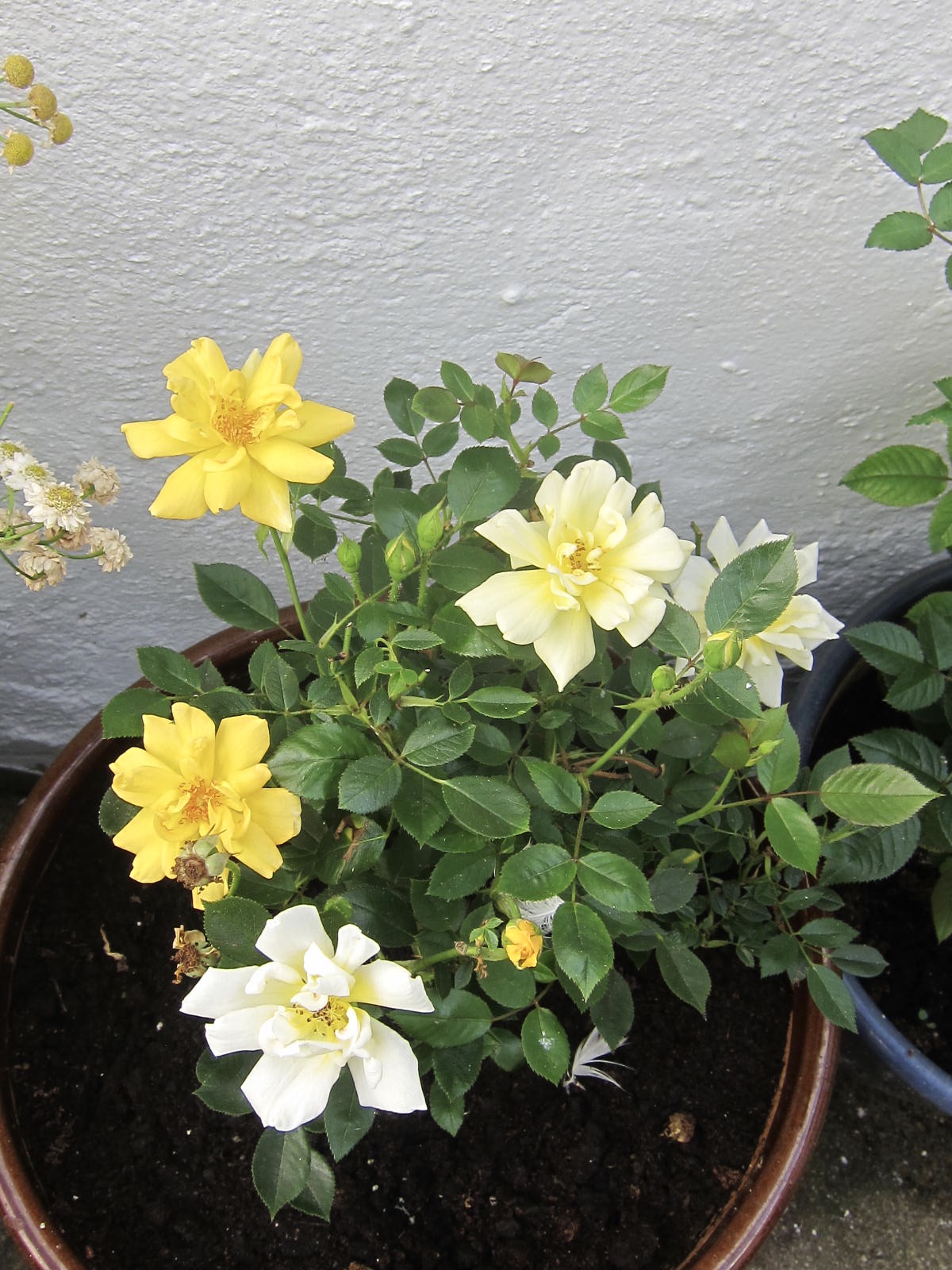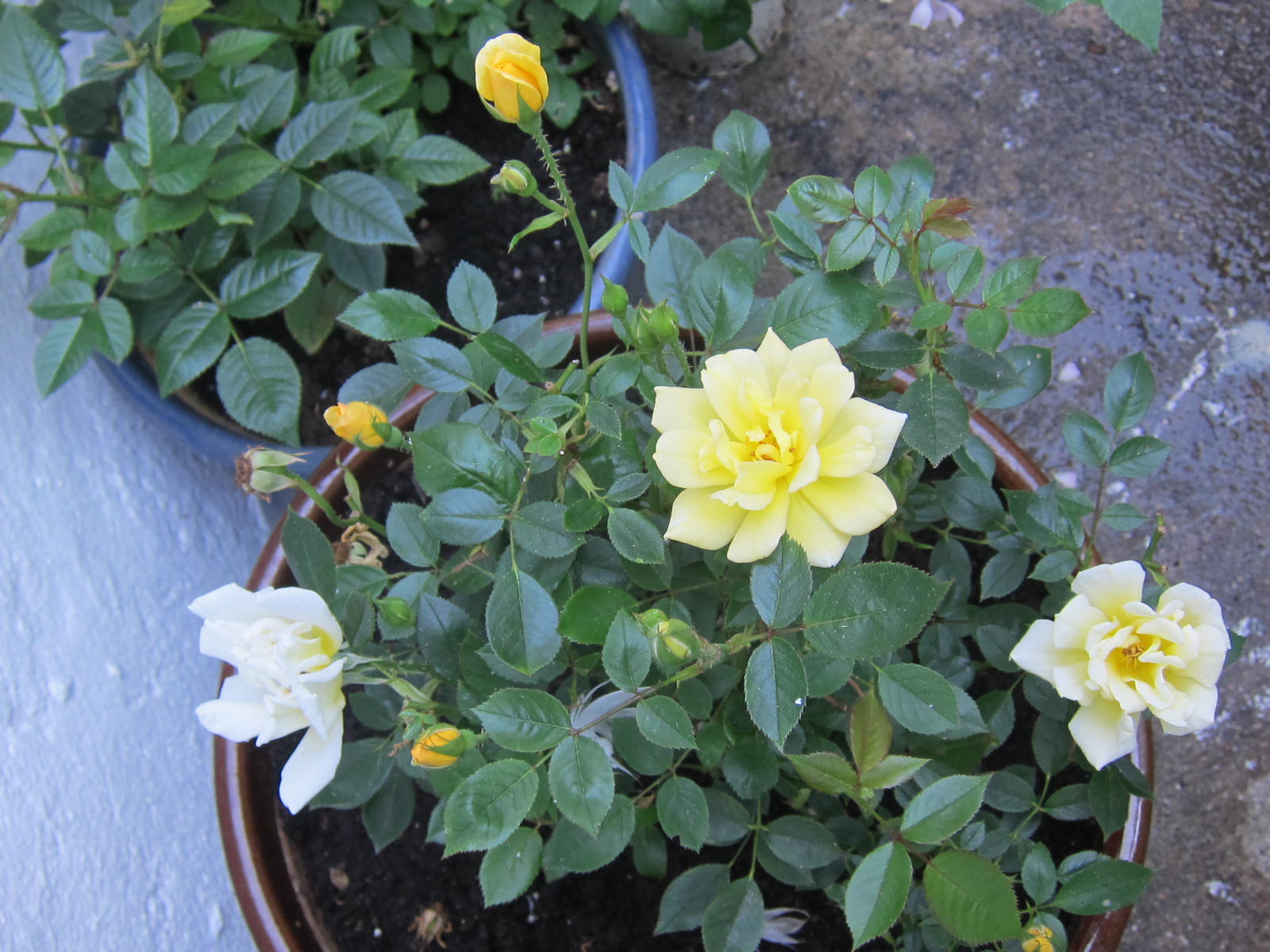Thanks Karl, I will go looking into those names you mentioned, we do not have many or any of them, but I will look at parents and descendants.
Correction: Turns out the rose I have long known and loved as ‘François Foucard’ is something else. I don’t know what. The real FF was (is?) semi-double, which matches the ancestry. I had wondered how '‘l’Ideal’ could father such a double rose.
It is often difficult to be sure that an old rose in commerce is the real deal. But throwing caution to the wind, one might try ‘Anna-Maria de Montravel’ as a parent. It is white, but apparently had a yellow(ish) Tea or Tea-Noisette as a grandparent. At any rate, when crossed with the yellow Tea, ‘Shirley Hibberd’, it produced ‘Kleiner Alfred’. This is said to have been yellow, but I haven’t seen a picture.
It might happen that ‘Anna-Maria de Montravel’ crossed with a good, deep yellow HT or Floribunda would give something novel in yellow.
These are the 2 you would want and be hard pressed to ever find again in a lifetime:
Golden Chersonese
Canary Bird
Unfortunately, these days, you would be hard pressed to find MOST of that list here.
Baby Goldstar. Cross between Rouletii and Eduardo Toda. 1947 by Pedro Dot in Spain. Quite a sweet little miniature yellow rose, the flowers are more yellow than the photograph suggests, though older flowers do turn more very pale yellow almost white.


Thanks pacificjade, they are high on the wish list.
Kim, the list is what is on offer from the nursery, which will be closing after our Winter
Julie777, it is very nice, but unavailable here in Australia, thanks anyway.
Thanks, David, I understand. You can’t buy the majority of those varieties in this country now.
that is a shame Kim, I believe there are some good breeders in amongst them. Any suggestions
Nothing that I would want to use, David. I’ve already used Hugonis and none of the others possess traits I am looking for, other than Perle d’Or. If you had decades and were looking for increased cold hardiness, many of them might be of some use, but nothing for the conditions I live with.
Thanks Kim
You might get some surprising results from using ‘Harison’s Yellow’ (“Harrisonii” on your list)–while it won’t necessarily transmit bright yellow, it is capable of producing repeat-blooming offspring when crossed with modern roses and could be a fun plant for you to tinker around with. It’s also a nice once-blooming rose if you have the space and it likes your climate. The “Old Scotch Yellow” might be worth a try as well, since it probably has a similar species background, but I haven’t grown it.
I would agree about the rarity of ‘Golden Chersonese’ and ‘Canary Bird’ (these are both diploids), and I wouldn’t pass them up if I found them for sale, personally. Rosa hugonis is related to them but not quite as strong of a yellow. If availability is a factor in your decision, ‘Golden Moss’ is also very rare and seems to have interesting potential given its background.
You might have luck with ‘Perle D’Or’, although I’ve had poor results trying to get it to set seed or germinate so far. All of the varieties mentioned so far might be best used as pollen parents, either because of poor/slow germination or difficulty getting crosses to set. ‘Agnes’ is even more difficult to use in breeding than the above varieties (again, you’d probably only have rare luck with its pollen), but I still like it for its health and very sweet fragrance. It can repeat a bit, but does most of its blooming in the spring. ‘Persian Yellow’ is not one that most people gravitate to for direct breeding, but the most successful results have ultimately led to significant advances in flower color and fragrance.
I haven’t grown ‘Fruehlingsgold’ yet but would say that it should be worth using in breeding based on its record and parentage, though I would personally steer clear of ‘Fruehlingsduft’. That one has an unpleasant linseed oil fragrance to my nose, and based on that I suspect that it was not really a form of R. spinosissima that Kordes used in its creation, but something more along the lines of R. laxa or R. fedtschenkoana. The recorded parentage of ‘Fruehlingsgold’ should allow it to produce a very pleasant scent, if you are similarly sensitive to that.
I’m not as sure about the others when it comes to yellow-flowered offspring potential, but you never know.
Stefan
Thanks Stefan, I will look into your recommendations.
str